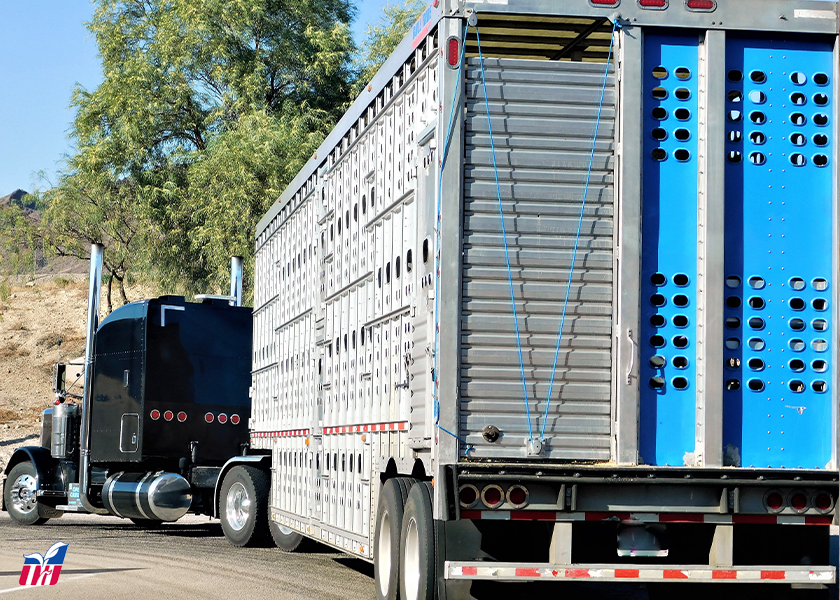Livestock Analysis | February 2, 2024

Price action: Expiring February hog futures slipped 35 cents to $75.45 Friday, while most-active April futures gained 7.5 cents to close at $83.825. That represented a weekly rise of 57.5 cents.
5-day outlook: The hog and pork complex continues exhibiting seasonal strength, but futures traders are apparently wondering if the premiums now built into nearby futures will be justified by the anticipated gains. For example, the hog index is still rising, with the CME officially confirming yesterday’s preliminary quote for Wednesday’s hog index reading at $72.71, up 33 cents from Tuesday. Today’s calculation puts Thursday’s unofficial quote at $73.12, up another 41 cents. Thus, today’s February futures settlement implies an approximate $2.25 rise over the next 10 days, with the contract going off the board at noon on February 14. Pork cutout gains are also supportive, with yesterday’s big ham price advance largely persisting through noon today. Big pork rib losses offset a rebound in pork belly primal values, with the net result being a two-cent uptick to $88.61 in pork cutout at noon. This week’s preliminary slaughter total reached 2.691 million head, up 2,000 head from last week’s huge figure. Look for a significant seasonal reduction next week, since three weeks of huge slaughter have likely caught up industry marketings after previous holiday- and weather-related cutbacks. That should also tend to support the hog and pork complex.
30-day outlook: The hog and pork complex tends to rally into the mid-to-late-February period. Seasonally dropping hog supplies, weights and slaughter rates play roles in the drop, as well as improving pork demand. Processors buying and treating hams in preparation for Easter dinner features may play a role in the tendency toward gains as well. After grocers maintained ham prices at elevated levels last Easter (causing an apparently huge shortfall in sales), we suspect they’re going to be more aggressive this spring. Anticipation of related wholesale purchases of hams is a big reason we think the market will largely avoid the late-winter setback that often follows February gains. Strong export sales are also supporting the hog and pork complex.
90-day outlook: April hog futures are trading substantially above the hog index, as well as the more modestly priced February contract. This implies we have considerable company in anticipating sustained late-winter price strength rather than the more common Lenten setback. We’re not entirely convinced forthcoming events will justify the April premium. A portion of the general optimism may reflect industry anticipation of sustained export sales, although we would warn it’s highly unlikely those will match the huge Chinese buying that powered the market steadily higher through the first half of 2021. Still, robust demand appears set to at least partially amplify the usual spring hog rally as steady seasonal supply reductions are met by growing grilling demand from consumers.
What to do: Get current with feed advice. Carry all production risk in the cash market for now.
Hedgers: Carry all risk in the cash market for now.
Feed needs: You have all corn-for-feed and soybean meal needs covered in the cash market through February.
Price action: April live cattle futures rose 57 1/2 cents to $183.75, closing near mid-range, reaching a nearly three-month high and gaining $2.075 for the week. March feeder cattle futures lost 7 1/2 cents to $244.80, nearer the session low after hitting a 3.5-month high early on. For the week, March feeders rose $5.10.
5-day outlook: The bullish weekly high close in April live cattle futures sets the stage for some follow-through technical buying interest from the speculators early next week. Solid cash market fundamentals should continue to support buying interest in futures. Cash cattle trade turned active Thursday afternoon as packers raised bids $2 to $4 from last week, depending on location. After weeks of holiday- and weather-related marketing disruptions, packers are planning for bigger slaughters amid being short-bought on their needs. The noon report showed Choice-grade boxed beef prices fell $1.62 at $293.32, while Select-grade rose $2.97 to $286.22. While the Choice-Select spread narrowed seasonally to $7.10, supplies of market-ready animals likely still remain tight. Movement at midday was 79 loads.
30-day outlook: The reduced performance by cattle during the arctic mid-January weather conditions in the Midwest reduced the supply of Choice-grade beef and helped power January’s push to all-time highs for the first quarter. Select-grade beef values rose almost $30.00, narrowing the spread between the cuts to $7.10 at noon today. While a seasonal phenomenon, the very narrow spread also dispels ideas the market was awash with low-quality cattle due to the cold. Cattle supplies are likely to continue declining seasonally. Meantime, demand is holding up well.
90-day outlook: The U.S. Labor Department today reported January non-farm payrolls adding a strong 353,000 jobs, well above market expectations. Hourly earnings increased more than expected and the unemployment rate remained steady at 3.7%. The stronger U.S. economy bodes well for consumer demand for beef in the coming months and heading into the outdoor grilling season in the springtime.
What to do: Get current with feed advice. All production risk in the cash market for now but be prepared for some hedge coverage as we have demand concerns.
Hedgers: Carry all risk in the cash market for now.
Feed needs: You have all corn-for-feed and soybean meal needs covered in the cash market through February.






